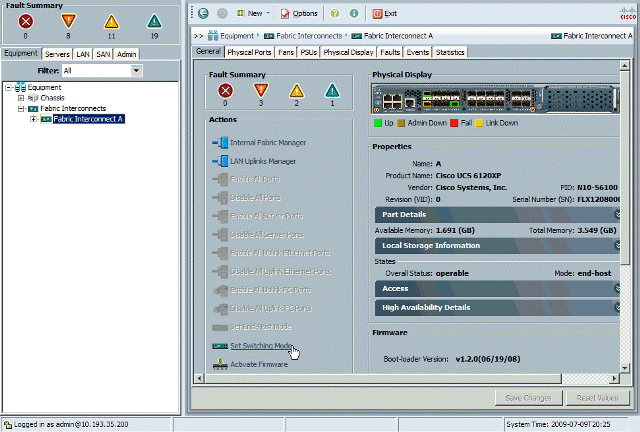Introduction
Unified Computing System (UCS) fabric interconnect running in end host mode do not function like regular LAN switches. They don’t forward frames based on destination MAC addresses and they don’t run any switching protocol for either Ethernet (e.g. STP) or FC (e.g. FSPF, Domain manager, etc). This is because by definition a UCS system should exist at the edge of the LAN. A regular switch connected to the UCS system will see it as a host with a large number of MAC addresses and network interface cards. By default all of the network ports in a fabric interconnect are in end host mode. A fabric interconnect has four different types of ports for performing different functions. The network uplink ports connect via Ethernet or Fiber channel to LAN/SAN respectively. The server ports and the fabric ports connect to the fabric extender in the chassis. The management port connects to the out-of-band management network. Two clustering ports connect to the UCS manager instances in the peered fabric interconnects.
End Host Mode Overview
In Ethernet end host mode forwarding is based on server-to-uplink pinning. A given server interface uses a given uplink regardless of the destination it’s trying to reach. Therefore, fabric interconnects don’t learn MAC addresses from external LAN switches, they learn MACs from servers inside the chassis only. The address table is managed so that it only contains MAC addresses of stations connected to Server Ports. Addresses are not learned on frames from network ports; and frames from Server Ports are allowed to be forwarded only when their source addresses have been learned into the switch forwarding table. Frames sourced from stations inside UCS take optimal paths to all destinations (unicast or multicast) inside. If these frames need to leave UCS, they only exit on their pinned network port. Frames received on network ports are filtered, based on various checks, with an overriding requirement that any frame received from outside UCS must not be forwarded back out of UCS. However fabric interconnects do perform local switching for server to server traffic. This is required because a LAN switch will by default never forward traffic back out the interface it came in on.
Change to switching mode
However this feature of a fabric interconnect can be changed back to normal switching which allows users to run protocols like PVST (Per VLAN Spanning Tree). To change to Ethernet switching mode, in the UCS manager, navigate to Equipment tab > Fabric Interconnect > Fabric Interconnect A and then click on Set Switching mode. Note that this will cause both of the fabric interconnects to reboot.
